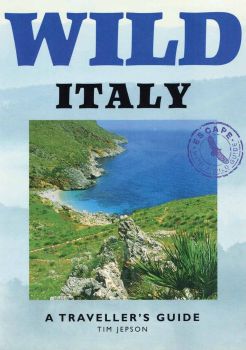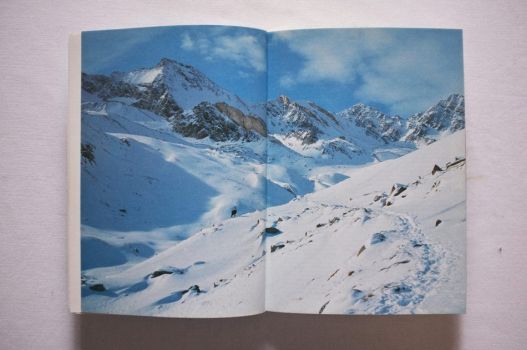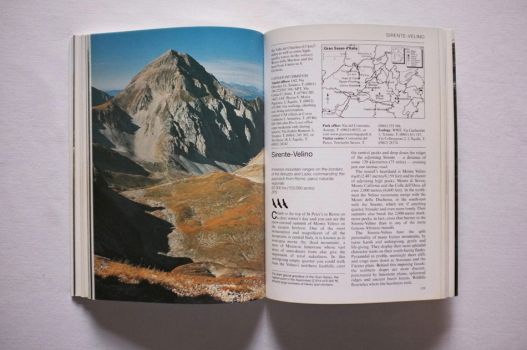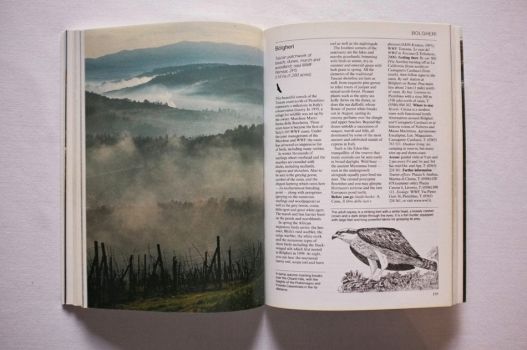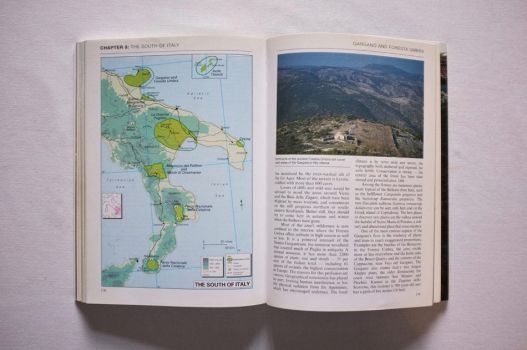-
“Readers of the second edition of Tim Jepson’s gem of a book will be… thanking the author for leading them away from the obvious in Italy – the cities and galleries, the beaches – and into the wild.”
-
“Beautiful photographs and excellent maps… He encourages you to visit the wilderness of the Abruzzi or experience the excitement of Mount Etna.”
-
“Compared to the other European countries, there are very few nature guides (especially in English) for Italy. This book is packed with information – an excellent book!”
Wild Italy
A Traveller’s Guide
£12.50
Venture beyond the great Renaissance cities of Florence and Siena, drive a short distance from Milan, Venice, Rome or Naples, and you come to another Italy, by turns lush and verdant, rugged or parched, the countryside of ancient Rome, of Dante and St Francis of Assisi. Wild Italy will take you there.
Dispatched next day with Royal Mail 2nd Class
- RRP: £12.50
- Format: 210 mm x 149 mm (8 ¼ x 5 4/5 in)
- Pages: 224
- Weight: 0.4 kg (0.9 lb)
- Pictures: 50 colour, 45 b/w
- Maps: 8 colour, 18 b/w
- Binding: Paperback
- ISBN: 978 1 873329 35 1
- Publication: 2005
In Wild Italy, Tim Jepson leaves the well-worn tourist haunts of traditional guide books behind him in search of fresher pleasures. He offers a rural, rather than an urban Italy, revealing the best of the long walks, mountain hideaways, woods, plains, sea coasts and remote islands where travellers can still find a refuge from the modern world.
He explores the whole country from its Alp-studded waist to its distant toe kicking the football of Sicily towards Africa. Like an unhurried lover, he works his way down thigh and shin, following the line of the Apennines, locating the pressure points between continental and peninsular Italy, pinching to see where the prosperous north gives way to the Mediterranean south, looking for those last empty stretches of littoral, down one side and up the other, where the bathers have yet to set up their parasols.
Having lived in Rome and trekked the entire peninsula, Tim Jepson knows the secret places that are as oxygen to a suffocating man after the murderous drive through the suburbs of Milan or Naples. He has picked out the loveliest spots in Sicily and Sardinia and plotted the last few pinpricks of Italian territory, the scattered islands off the Tunisian coast which are some of the most isolated and primitive places in Europe. An extensive knowledge of, and deep passion for wild Italy are reflected in Jepson’s writing. ‘One view of a cypress tree or stone farm-house and we are entranced,’ he writes, ‘overcome by that longing for the warm south which Icelanders describe nicely as “the need for figs”.’
About the Series
WILD ITALY: AN INTRODUCTION
Map of Italy showing Chapter Areas
THE KEY TO ITALY’S WILD PLACES
Wild Habitats
Protected Wild Places
Exploring Wild Italy
To the Reader
CHAPTER 1: THE WESTERN ALPS AND ITALIAN RIVIERA
Val Grande
Alta Valsésia
Gran Paradiso
Gran Bosco di Salbertrand
Orsiera-Rocciavrè
Alpi Maríttime
Monte di Portofino
Cinque Terre
CHAPTER 2: THE DOLOMITES AND CENTRAL ALPS
Gruppo di Tessa
Stélvio
Adamello-Brenta
Sciliar
Panevéggio-Pale di San Martino
Puéz-Odle
Fánes-Sénnes-Bráies
Dolomiti di Sesto
CHAPTER 3: THE VENETIAN PLAIN AND EASTERN ALPS
Monte Baldo
Monti Lessini and Pasubio
Dolomiti Bellunesi e Feltrine
Bosco del Cansíglio
Alpi Giulie-Cárniche
Laguna di Cáorle
Laguna di Marano and Laguna di Grado
Carso
CHAPTER 4: THE PO DELTA AND NORTHERN APENNINES
Delta Padano
Torrile
Sassi di Rocca Malatina
Abetone and Monte Cimone
Foreste Casentinesi
Monte Cónero
Monti Sibillini
Torricchio
CHAPTER 5: TUSCANY AND UMBRIA
Alpi Apuane
Migliarino-San Rossore-Massaciúccoli
Bólgheri
Parco della Maremma
Monte Argentario
Arcipelago Toscano
Monte Cucco
Valnerina
CHAPTER 6: ABRUZZO
Gran Sasso and Monti della Laga
Sirente-Velino
Parco Nazionale d’Abruzzo
Bosco di Sant’Antonio
La Maiella
Alta Molise
CHAPTER 7: LAZIO AND CAMPANIA
Lago di Vico and Monti Cimini
Monti Simbruini and Monti Ernici
Posta Fibreno, Circeo
Monti Picentini
Vesuvio
Vallone delle Ferriere
Oasi di Serre Persano
Cilento
CHAPTER 8: THE SOUTH OF ITALY
Gargano and Foresta Umbra
Isole Trémiti
Saline di Margherita di Savóia
Cesine
Le Gravine Pugliesi
Massiccio del Pollino and dell’Orsomarso
Sila
Aspromonte
CHAPTER 9: SICILY
Etna
Monti Nébrodi
Madoníe
Zingaro and Monte Cofano
Isola Maréttimo
Isola di Pantelleria
Isole Pelágie
SARDINIA
Monti del Gennargentu
Giara di Gésturi
Monlentargius
Monte Arcosu
Sínis
Isola di Asinara
Monte Limbara
Glossary
Useful Addresses
Index
Tim Jepson was educated at Oxford where he studied English Literature. He is the author of six books about Italy and has a particular interest in Tuscany and Umbria. He lived in Italy for five years and wrote for The Sunday Telegraph as their Rome-Italy correspondent. He has covered other areas of the world in Train Journeys of the World, Mediterranean Wildlife and the Rough Guides to Canada and the Pacific Northwest.
TUSCANY AND UMBRIA
For many people, Tuscany is Italy. One view of a cypress tree, vineyard or stone farm-house and we are entranced, overcome by that longing for the warm south which the Icelanders describe nicely as the ‘need for figs’. Countryside here has a purity that to northern eyes is simply irresistible: enticing forests, sleepy villages, gentle hills, olive groves, winding lanes, terraced slopes, geraniums, orange-tiled roofs, all over-arched by
the translucent pearly skies of a thousand Renaissance paintings.
Tuscany is a huge region, however, and far more complex than its beguiling pastoral image would suggest. The arc of the northern Apennines marks its borders to north and east, curving in an embrace around the great Renaissance cities of Florence and Sienna. Within this broad sweep lie all manner of intriguing landscapes. From the high country of the Garfagnana, Mugello and Casentino in the east the wild traveller’s interest sifts westward, skipping over Tuscan heartland – the Chianti hills, the tourist-filled cities, the Sienese badlands – to the Apuan Alps, jagged, marble-veined mountains that belie any notion of soft-centred pastoralism.
ETNA
Ancient Navigators believed Etna to be the highest point on earth. The Arabs called it Jebel, from which derives its alternative name, Mongibello, the ‘mountain of mountains’. Pindar described it as the column that supports the sky. Sicilians call it simply ‘the mountain’. One of the greatest volcanoes in the world – 3,350 metres (10,990 feet) high and over 250 kilometres (150 miles) in circumference – it is probably the single most monumental land-form in the Mediterranean.
For all its majesty, it is a remarkably young volcano, perhaps only 60,000 years old, and it has some unusual characteristics. Here, in a rare configuration, magma wells up directly from the bowels of the earth, funnelled through a central crater which plunges 50 kilometres (30 miles), direct to the level at which continents drift.


